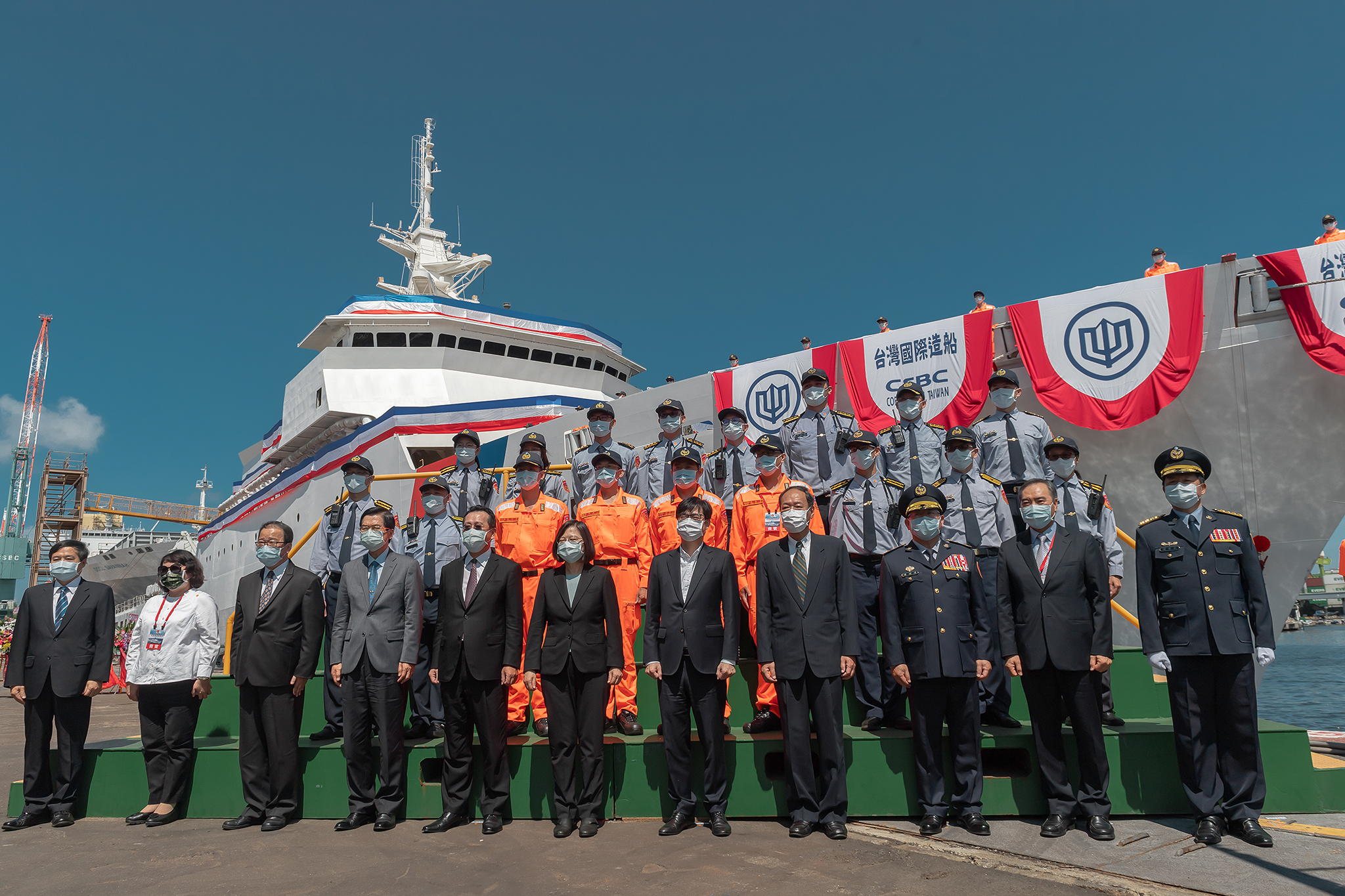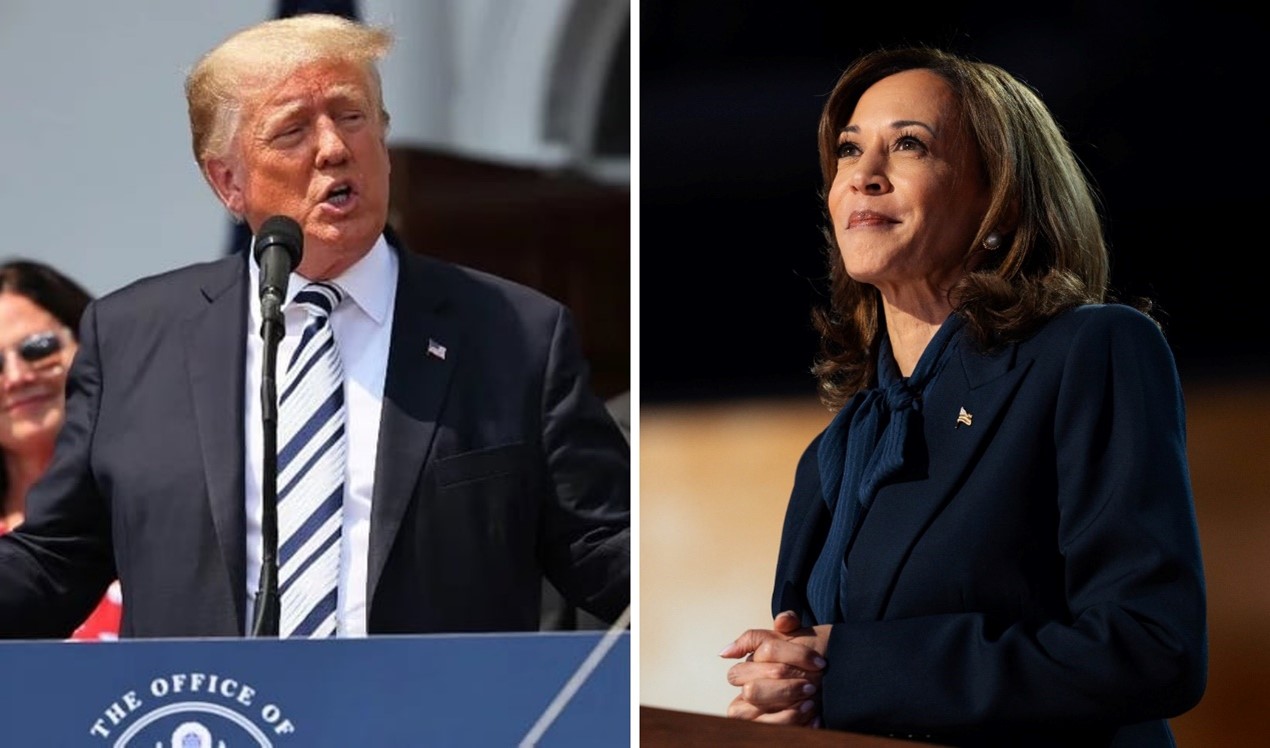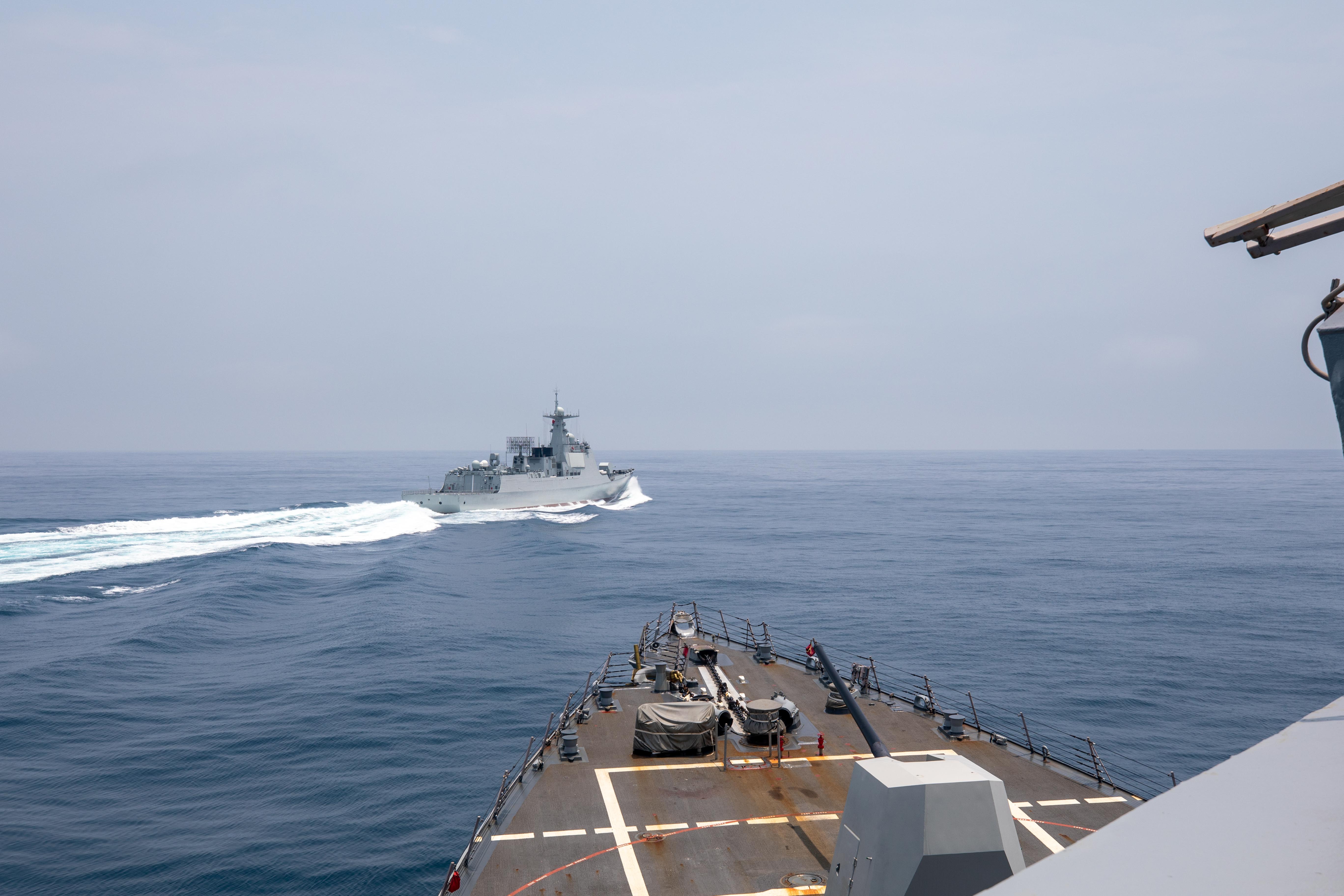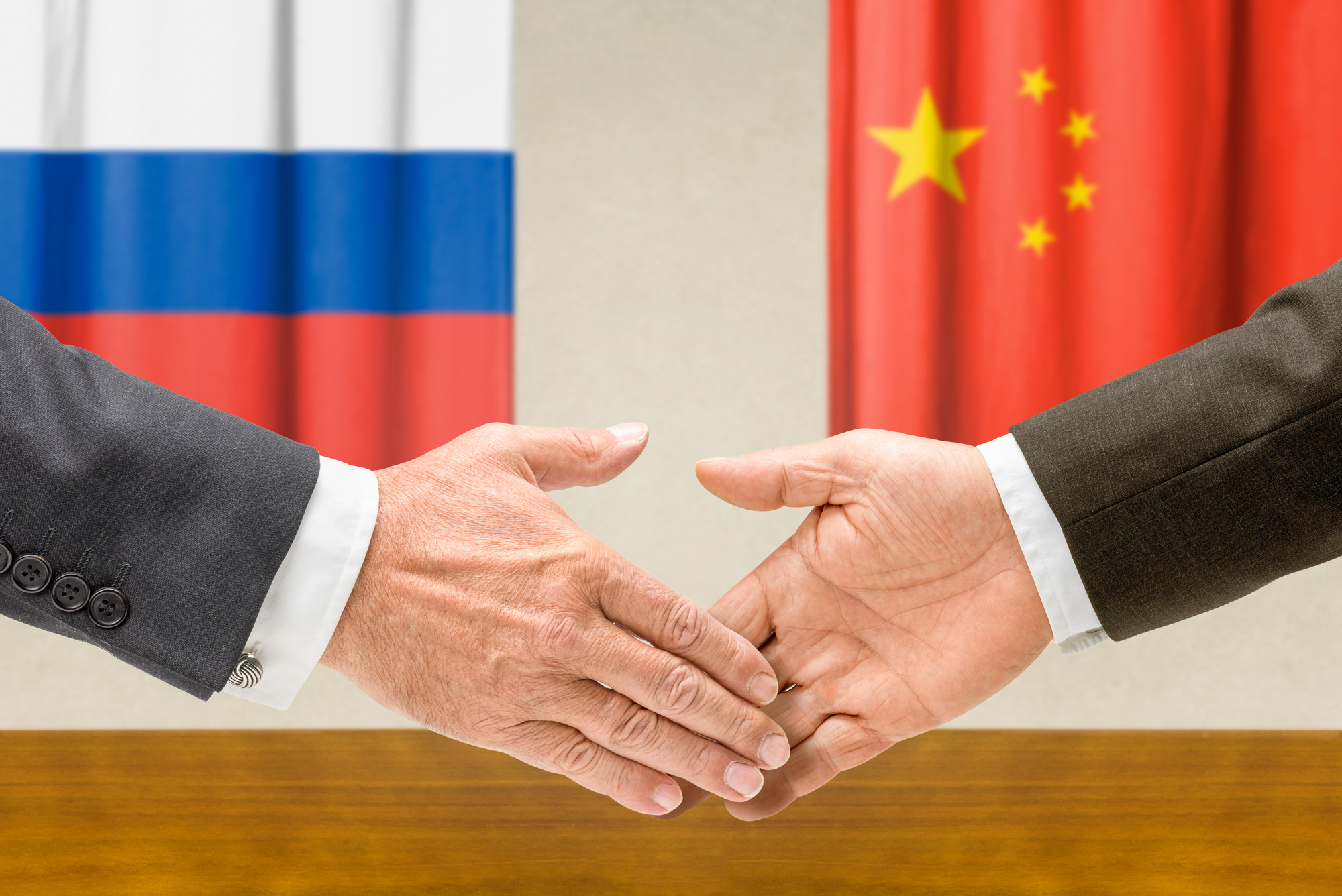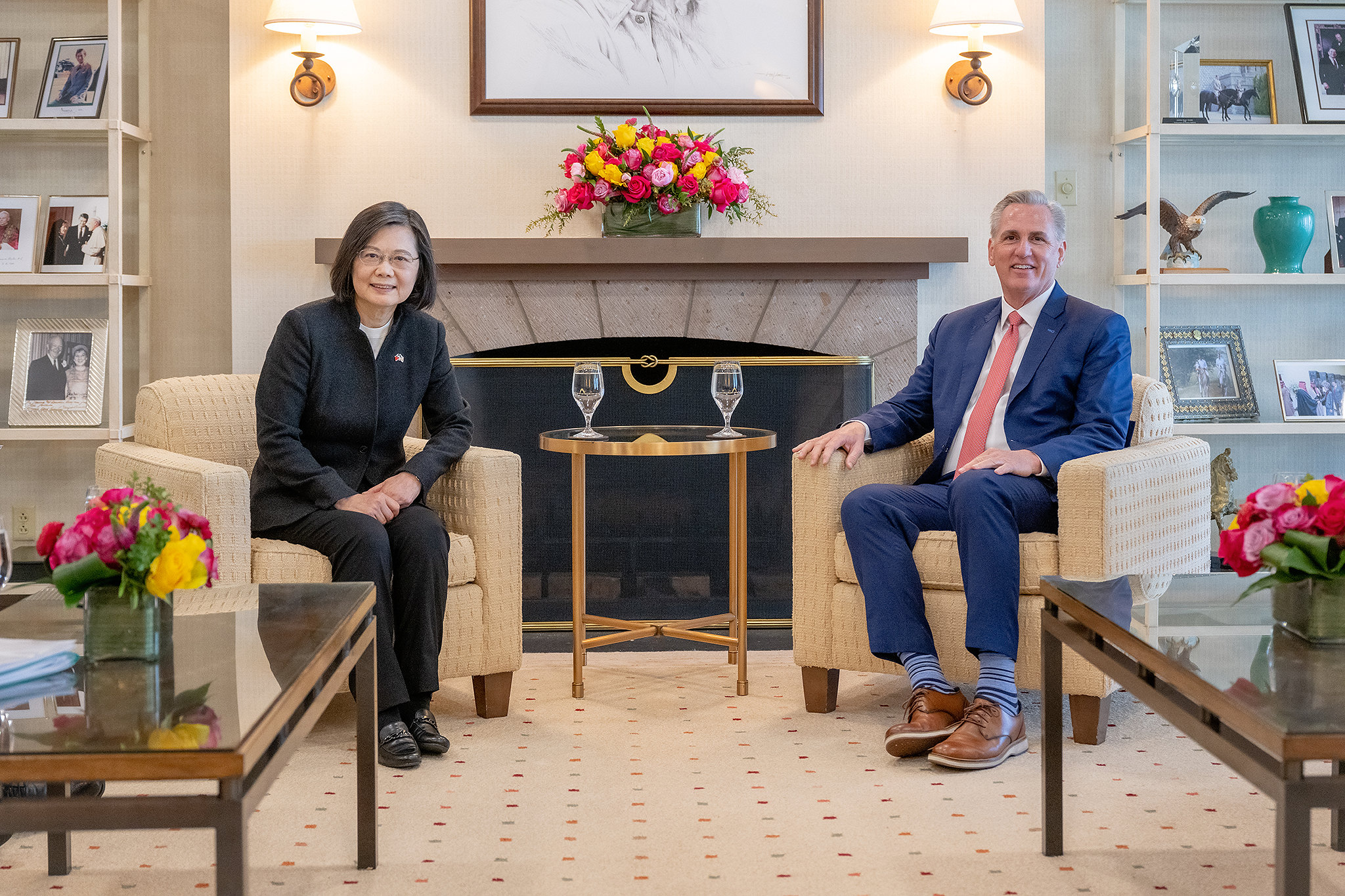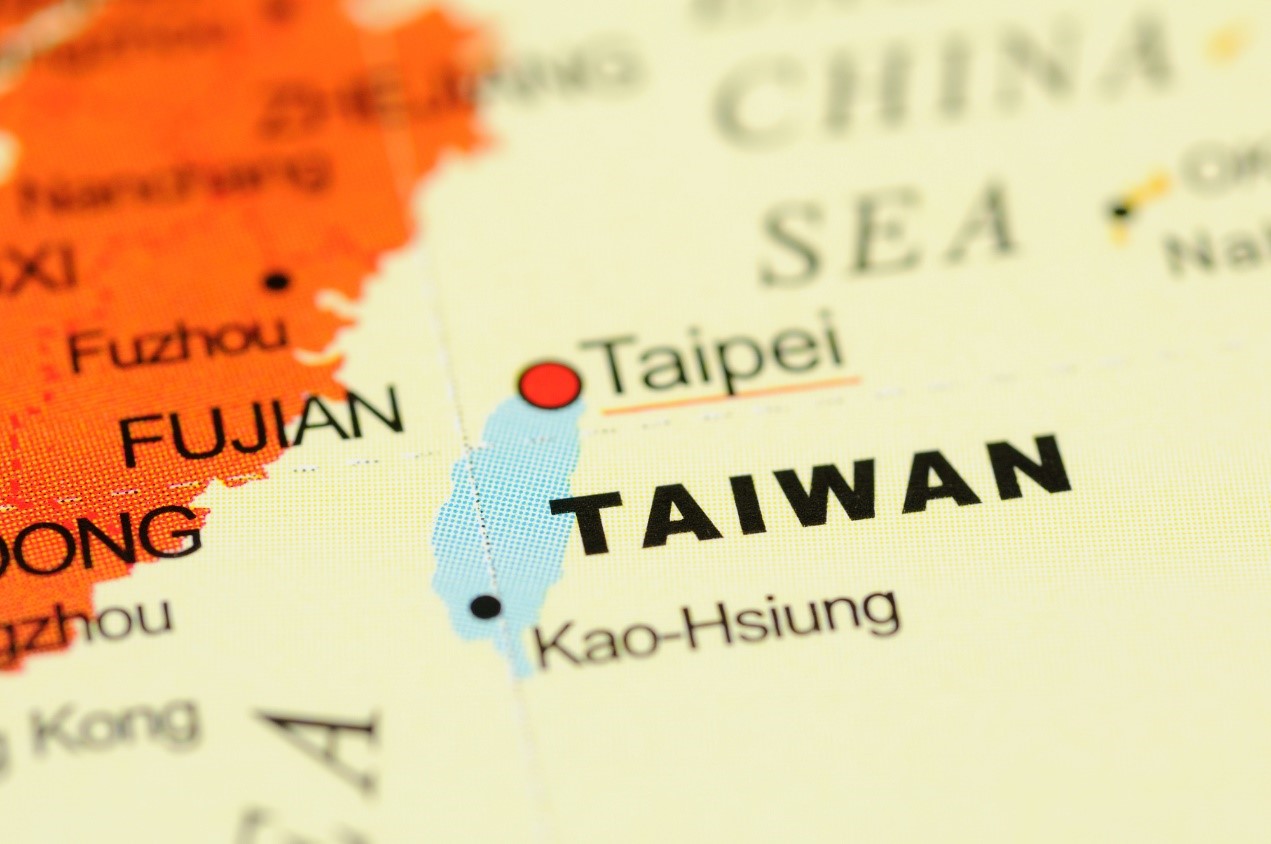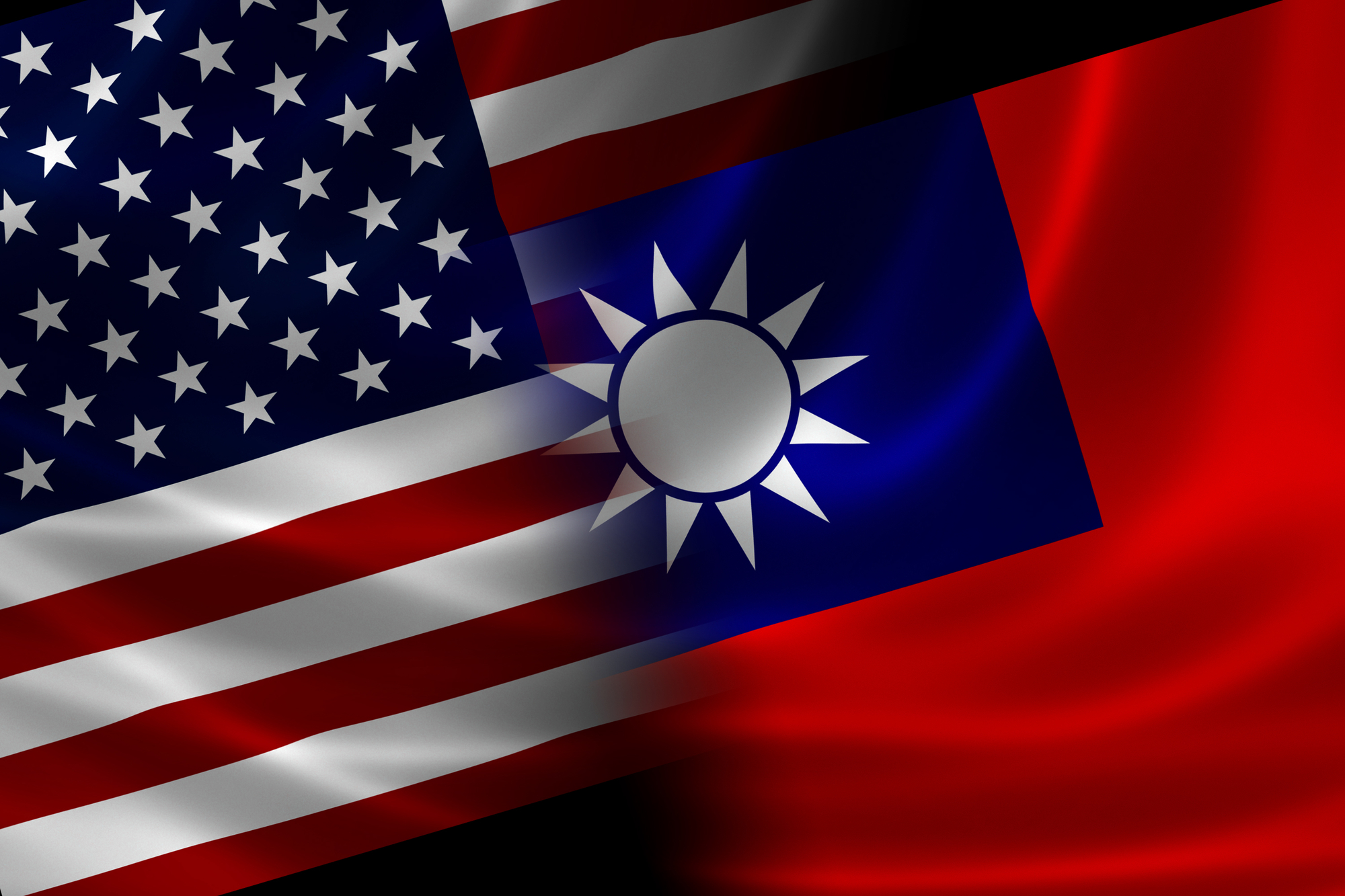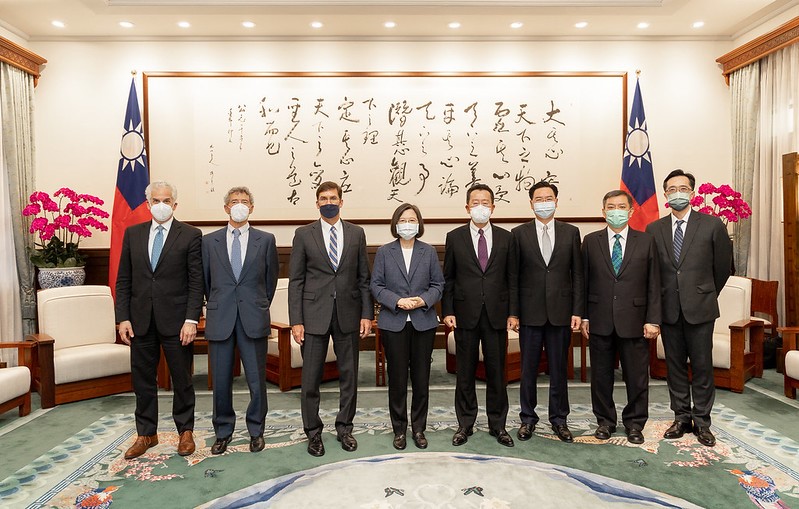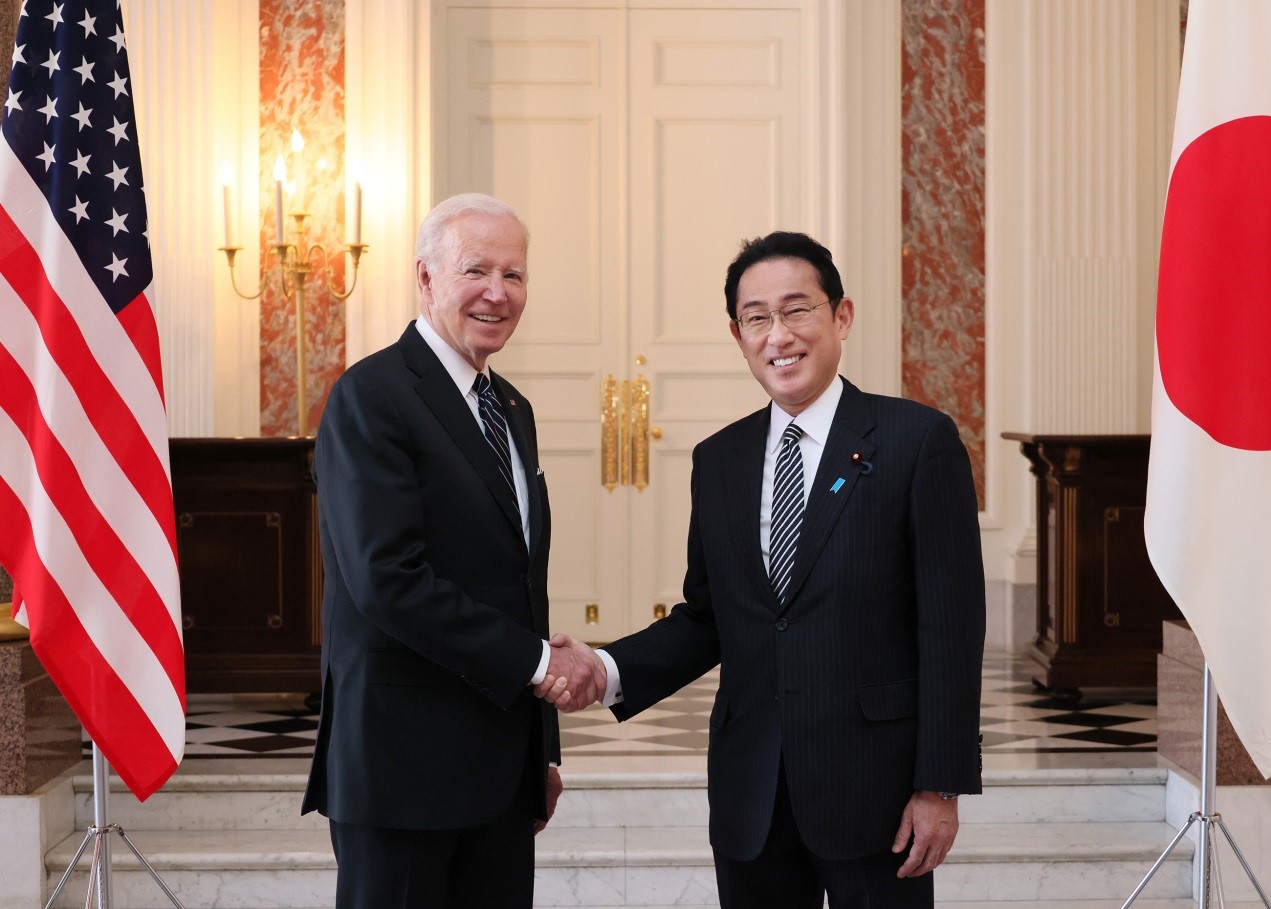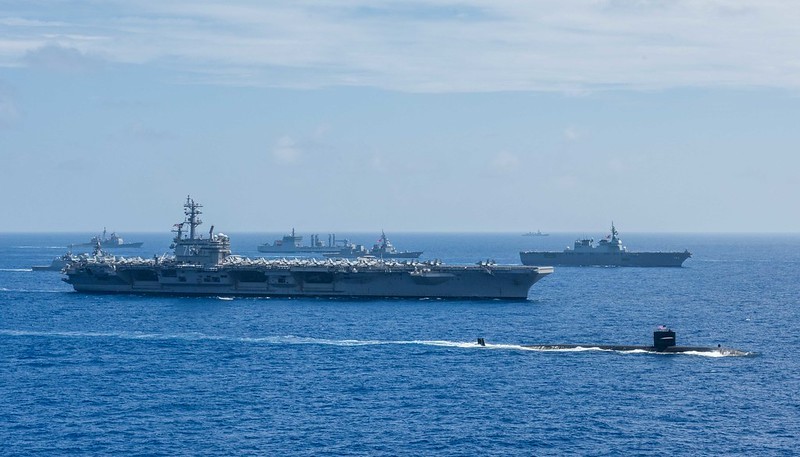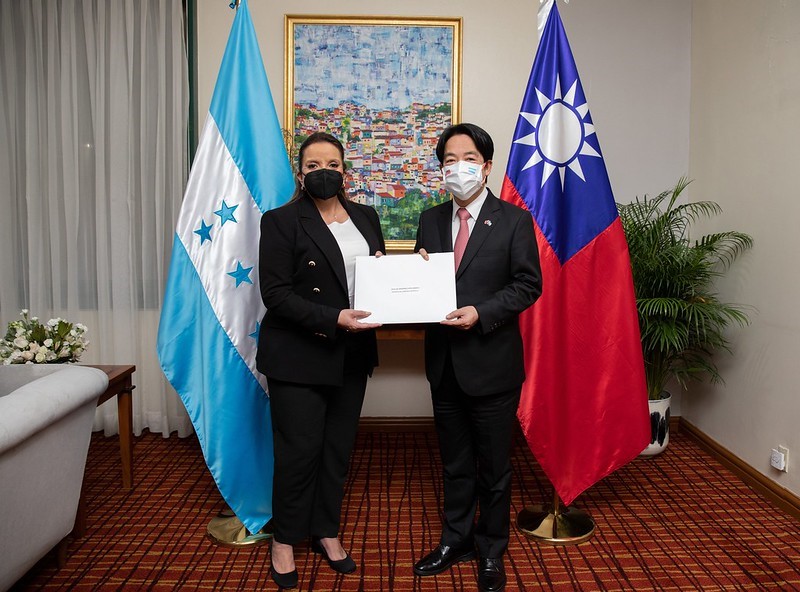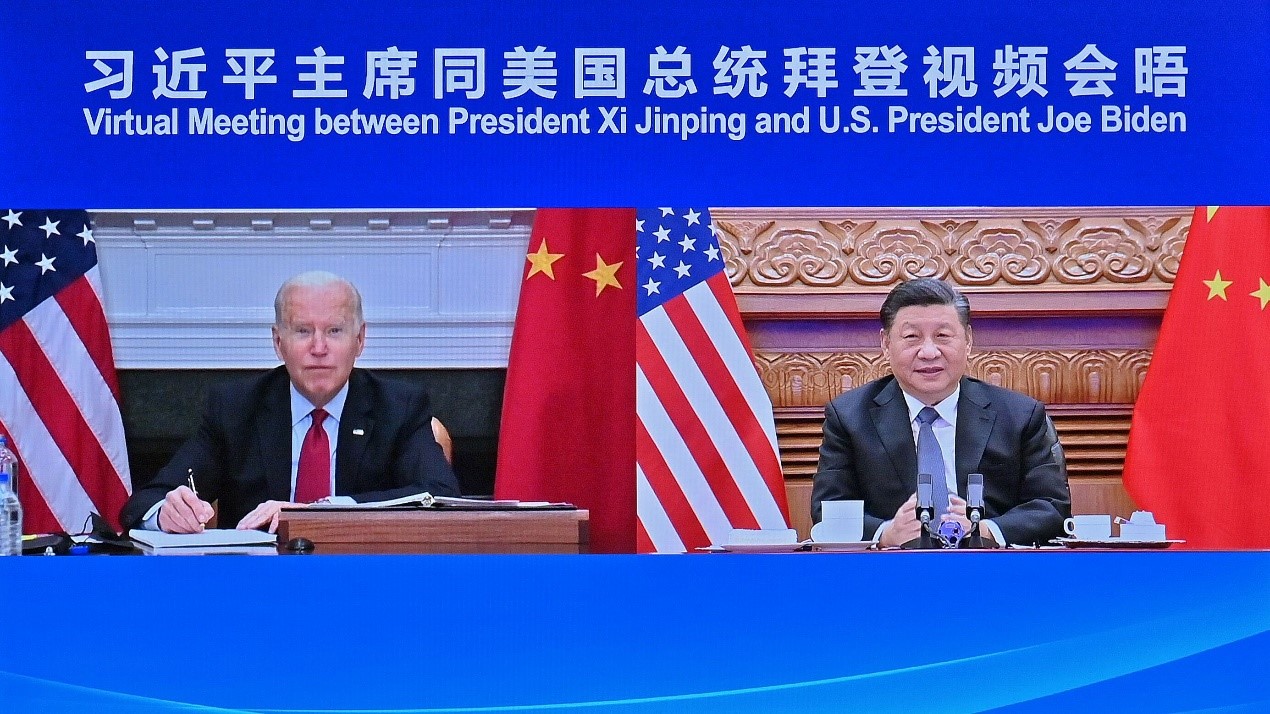Given the USCG cooperation agreement with the TCGA, the possibility of Taiwan’s participating in a Quad Plus, the likelihood of Taiwan receiving an invitation to Rim of the Pacific 2022 (RIMPAC), cooperation with the US National Guard, and the CNN interview with President Tsai Ing-wen where she clearly admitted that U.S. forces are helping to train the Taiwan military, U.S. strategic ambiguity is cautiously being chipped away. Picture source: Office of the President, ROC(Taiwan), June 2, 2020, Flickr,
Prospects & Perspectives 2022 No. 1
Chipping Away Strategic Ambiguity
By Bill Sharp
January 4, 2022
The People’s Republic of China’s (PRC) approach to unifying Taiwan has undergone transformation. Rather than continuing to employ an old carrots and sticks approach, emphasizing economic benefit and military force, the PRC strategy towards Taiwan is based on “gray zone warfare.”
Gray zone warfare seeks to exhaust Taiwan’s defense forces, plus sap Taiwan’s popular morale. It is something straight out of Sun Tzu’s Art of War in that its goal is to win without fighting. Here “win” is to “peacefully” unite with Taiwan. The methods of deterrence and signaling used by Taiwan and the U.S., however, have been ineffective.
PRC air operations seek to exhaust the Taiwanese air force. By flying a multiplicity of sorties into Taiwan’s Air Defense Identification Zone (ADIZ), China forces the Taiwanese air force to scramble its combat aircraft to challenge PRC intruders. This leads to added wear and tear on aging Taiwan combat aircraft, costly added fuel consumption, and pilot fatigue. It also demoralizes the Taiwanese government and citizenry.
PRC maritime gray zone operations against Taiwan seek to establish pressure, plus create presence while effecting “plausible denial.”
The Chinese Coast Guard (CCG) and the People’s Armed Forces Maritime Militia (PAFMM) using fishing vessels as cover pose a significant danger to Taiwan. American strategists contend that the PRC might transform them into a silent invasion force. This concern has been derived from Russia’s use in 2014 of the so called “little green men.” The little green men were military personnel in unmarked uniforms used to invade Ukraine and annex Crimea. Russia claimed not to have deployed military personnel, resulting in a slow Western response. Thus Russia was able to create a fait accompli. If the PRC were to invade Taiwan, CCG and PAFMM vessels would create confusion to paralyze U.S. and Taiwanese responses. The end result would be the same as in the Ukraine or Crimea: a fait accompli.
New PRC Law
In January 2021, the PRC created a law authorizing PRC assets to fire on foreign vessels. Given the PRC’s aggressive maritime behavior such as sand dredging and illegal, unreported, and unregulated fishing (IUU), in March 2021 the United States Coast Guard (USCG) and the Taiwan Coast Guard Administration (TCGA) signed a memorandum of understanding (MOU) in the form of a cooperation agreement to push back against the PRC. In May 2021, President Biden praised the agreement in a speech at the commencement ceremonies of the U.S. Coast Guard Academy. The first bilateral meeting was held virtually on August 11, 2021, where it was agreed to hold such meetings regularly. The meeting dedicated both coast guards to cooperatively enforce maritime law, combat IUU fishing, carry out search and rescue operations, conduct joint operations, and uphold the rule based international order. Nevertheless, the real motivation was to better control Chinese gray zone operations.
PRC Foreign Ministry spokesperson Hua Chunying said the pact violated U.S. commitments to China and called on the U.S. to “be cautious with its words and actions on Taiwan related issues.” Hua further stated, “We urge the US side to……refrain from sending any wrong signals to Taiwan independence forces, and refrain from encouraging and inciting Taiwan to expand its so-called international space.”
The USCG and TCGA MOU created a spin-off effect. Soon after the agreement was signed, the TCGA and Japan Coast Guard signed a cooperation agreement. Going a step further: Sato Masahisa (head of the ruling Japanese Liberal Democratic Party’s committee on Taiwan relations) tweeted on August 26 that the Japanese, U.S. and Taiwanese coast guards would train together. Taiwan Democratic Progressive Party legislator Tsai Shih-ying said this proposed trilateral cooperation was communicated adding that Taiwan, Japan, and the US agreed there is a need for coordinated maritime rescue and patrol exercises and related drills, in addition to joint humanitarian missions.
TCGA Buildup
Since 2008, the TCGA has been engaged in a 37 ship building program totaling 17,000 tons at a cost of approximately $24 billion Taiwan dollars or $782 million US dollars. When this construction program is completed, Taiwan will have a 36,000 ton coast guard with 200 plus vessels to supplement the Republic of China Navy’s (ROCN) 117 ships.
Two notable additions to the TCGA are the Anping, which was launched on April 28, 2020. The Anping is a 600-ton catamaran hull patrol vessel modeled on the design of the Tuojiang-class corvette in service with the ROCN. The vessel has a cruising speed of 35 knots and is equipped with a high pressure water cannon but can be converted to carry anti-ship missiles in wartime. The advanced hull design enables smooth operation in harsh sea conditions such as sea state seven and the form of the hull design offers a low radar signature. The vessel’s mission is to protect maritime rights, enhance fishing control rights, protect Taiwan’s littorals, and to chase away Chinese intruders. To facilitate its mission, there is a helicopter pad on the stern.
On April 29, 2021, the 4,000-ton Chiayi was commissioned. Built at a cost of $2.8 billion Taiwan dollars, it is the TCGA’s largest vessel. Its special characteristic is that it can be converted into a hospital ship to carry out Taiwan good will missions or a military vessel to confront China. The Chiayi also has a helicopter pad.
Such additions to the TCGA will enhance its international cooperation with Japan, the Philippines, Malaysia, Thailand, Indonesia, Vietnam, and the U.S. in operations to counter human trafficking, IUU fishing, maritime law enforcement, and drug smuggling.
Regional Cooperation
Given such cooperation with regional coast guards and the reported U.S. intention to increase the size of the Quad, Taiwan would bring a lot to a “Quad Plus,” including the detection of submarines, Internet security, and logistics. Taiwan would clearly be adding to regional security.
From the PRC’s view, U.S. cooperation with Taiwan will be seen as supporting independence. While defending Taiwan and pursuing a free, open Indo-Pacific, the U.S. must try to minimize agitating China. However, given the USCG cooperation agreement with the TCGA, the possibility of Taiwan’s participating in a Quad Plus, the likelihood of Taiwan receiving an invitation to Rim of the Pacific 2022 (RIMPAC), cooperation with the US National Guard, and the CNN interview with President Tsai Ing-wen where she clearly admitted that U.S. forces are helping to train the Taiwan military, U.S. strategic ambiguity is cautiously being chipped away.
(Bill Sharp teaches “Taiwan and China: Old Problems, Escalating Tensions” at the University of Hawaii, Manoa. He is a 2016 and 2020 Taiwan Fellow .)


